The anime “Naruto” is a major cultural hit, known for its adventure, action, and deep character arcs. It follows Naruto, an ambitious ninja aiming to be his village’s greatest leader, the Hokage.
The series, based on Masashi Kishimoto’s manga, spans numerous episodes across the original and its sequel “Shippuden,” showcasing epic battles, complex narratives, and character development. “Shippuden” expands the story, exploring character relationships and the universe further, cementing the franchise’s enduring appeal.
Key Takeaways
- Extensive Episode Count and Format: The Naruto series boasts over 700 episodes across its original series (220 episodes) and the sequel, “Naruto: Shippuden” (500 episodes), providing a comprehensive narrative journey. Additionally, the franchise has expanded into the ongoing “Boruto: Naruto Next Generations,” focusing on the next generation of ninjas.
- Deep Character Development: Central to its narrative are themes of perseverance, bravery, and the journey of its characters, particularly Naruto Uzumaki, from an ostracized orphan to a respected ninja with aspirations of becoming Hokage. This evolution is mirrored in other characters, showcasing significant growth and depth.
- Cultural Impact and Global Reach: Naruto has significantly influenced global pop culture, inspiring a fascination with Japanese ninja culture and becoming more popular among younger generations than some superhero movies. It’s recognized for its contribution to the globalization of Japanese anime and manga, with merchandise, conventions, and a strong online presence reflecting its widespread appeal.
- Media Expansions and Adaptations: Beyond the television series, Naruto’s story extends to movies, novels, and video games, adding layers to its universe. Notable films include “Naruto the Movie: Ninja Clash in the Land of Snow” (2004) and “Boruto: Naruto the Movie” (2015), among others, enriching the narrative with additional storylines.
- Filler Episodes and Canonical Content: The series includes a notable number of filler episodes, particularly relevant for viewers interested in the main plotline. Guides and bibliographies are available to navigate between canonical episodes and filler content, offering a structured viewing experience.
- Continuing Legacy and New Generations: The franchise’s legacy is sustained through “Boruto: Naruto Next Generations,” which explores the adventures of Naruto’s son, Boruto, alongside the changing dynamics of familiar characters now as adults. This continuation and other spin-offs keep the Naruto universe fresh and relevant for new audiences.
From Ninja in Training to Cultural Icon
The “Naruto” franchise, spanning from Masashi Kishimoto’s original manga to its anime adaptations, totals over 720 episodes across “Naruto” and “Naruto: Shippuden,” with “Naruto” itself comprising 220 episodes and “Shippuden” adding 500 more. These series capture the journey of Naruto Uzumaki, from an eager ninja in training to the respected leader of the Hidden Leaf Village, embodying themes of growth, resilience, and leadership.
Boruto: Naruto Next Generations
The continuation of the saga in “Boruto: Naruto Next Generations” further enriches the storyline, introducing Naruto’s son, Boruto, and new challenges that test the legacy of the original characters. Available in both edited and uncut versions, the series caters to a wide audience, enhancing its accessibility and appeal.
Cultural Impact and Influence
Beyond its core episodes, the franchise has expanded into a cultural phenomenon, influencing not just anime but also contributing significantly to global pop culture through various media and merchandise. The legacy of “Naruto” is sustained by its compelling storytelling, character development, and the vibrant fan community it has inspired, ensuring its place in the annals of anime history.
An Overview Of Popular TV Show
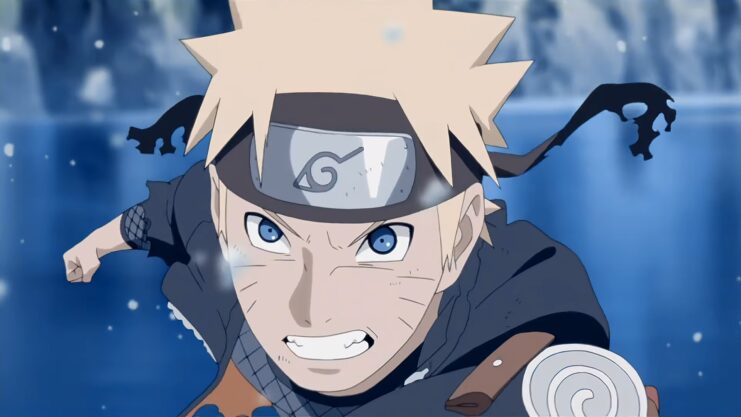
The series, penned by Masashi Kishimoto, is a significant cultural phenomenon that emerged from Japan, chronicling the journey of a boisterous and dedicated ninja.
Creation and Concept
Masashi Kishimoto designed “Naruto” with the concept of exploring the hardships of a ninja’s life. Kishimoto wanted to imbue the series with a rich Japanese cultural backdrop while focusing on themes of perseverance, bravery, and the experiences that shape a hero’s character.
He was influenced by previous shonen (young boy) comics and integrated his love for Japanese folklore and ninja culture into the creation of the “Naruto” universe.
Who is the Central Character?
The series centers on Naruto Uzumaki, an enthusiastic young ninja from the Hidden Leaf Village who seeks recognition and aspires to become the Hokage, the strongest ninja and leader of his village.
His character embodies the spirit of determination and the will to never give up, regardless of the challenges he faces. His growth from an ostracized orphan to a respected ninja is a focal point of the series’ narrative arc.
Anime Adaptation
The anime adaptation, based on Masashi Kishimoto’s manga, turned this captivating narrative about a boisterous young ninja into a cultural phenomenon. The television series was produced by Studio Pierrot and was first broadcast by TV Tokyo.
Production by Studio Pierrot
Studio Pierrot is renowned for its work on this anime series. Their attention to detail in animation brought the characters and the world of the Hidden Leaf Village to life. The show’s animation played a key role in capturing the dynamic action of ninja battles and the emotional depth of the story.
Broadcasting on Television Networks
The anime premiered on TV Tokyo and was beloved by fans for its compelling story arcs and well-developed characters. In the United States, Naruto was initially made available through Cartoon Network’s Toonami programming block before eventually moving to Adult Swim. This move expanded its reach, creating a strong fanbase across North America.
Is It Available in North America?
North American fans have several options for watching it. Viz Media holds the rights to the series and has facilitated its distribution across various platforms. Currently, the series is viewable on streaming services like Crunchyroll, providing fans with the ability to watch all episodes from the comfort of their homes.
Shippuden Continuation
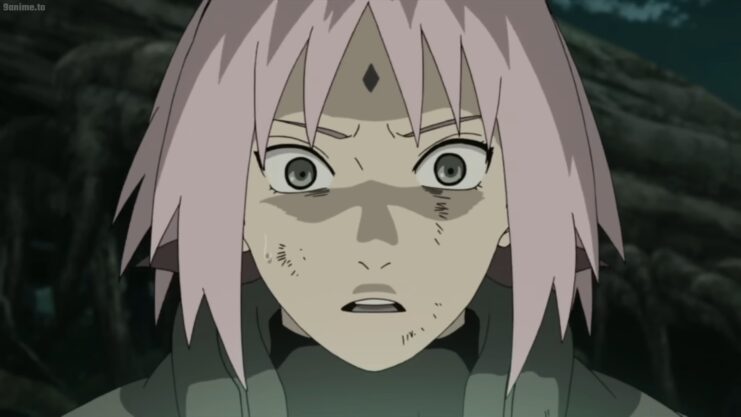
“Shippuden” serves as the compelling sequel to the original series, presenting a deepened plot, focused character development, and significant growth in the beloved franchise.
Plot Progression and Differences
“Shippuden” picks up with Naruto Uzumaki returning to his village after two and a half years of intense training. The series matures as the hero and his friends face darker themes and more serious challenges.
The plot diverges from the original series by focusing on Naruto’s quest to bring back Sasuke, battling the sinister Akatsuki organization, and unveiling the complexities of the shinobi world.
Throughout “Shippuden,” Naruto’s unwavering goal to become Hokage drives the narrative, displaying significant character evolution and endless determination.
Impact of Shippuden on the Franchise
The arrival of “Naruto: Shippuden” had a pronounced impact on the franchise’s longevity and popularity. The series not only added 500 crucial episodes to the universe but also expanded the breadth and depth of the story.
It propelled Naruto from a mischievous adolescent to a mature hero facing monumental threats. “Shippuden” solidified the saga’s standing in the anime world, as it offers a deeper exploration of the original themes while introducing new, more powerful antagonists that test the limits of Naruto and his allies.
The series successfully amplified the scale of story arcs and character conflicts, ultimately setting a standard for anime sequels in the genre.
More Details About Different Seasons
The anime franchise is divided into two significant parts: the original “Naruto” series and the sequel “Naruto Shippuden.” Each series comprises a detailed list of episodes, some of which are adapted directly from the manga source material, while others are additional filler content unique to the anime.
Number of Episodes
Naruto, the original anime series, consists of a total of 220 episodes. These episodes are spread across 5 seasons. The viewers should note that not all episodes are integral to the main story arc, with a substantial number of them being filler episodes.
The list of Naruto episodes details how these filler episodes are dispersed throughout the series.
Number of Shippuden Episodes
Naruto Shippuden, the continuation of the original series, extends to 500 episodes contained within 21 seasons. Much like its predecessor, “Naruto Shippuden” also incorporates filler episodes, which diverge from the manga’s storyline.
These filters can be skipped if viewers wish to focus solely on the main plotline. Additional information regarding the distribution of these episodes can be found within the List of Naruto: Shippuden episodes.
Character Development and Story Arcs
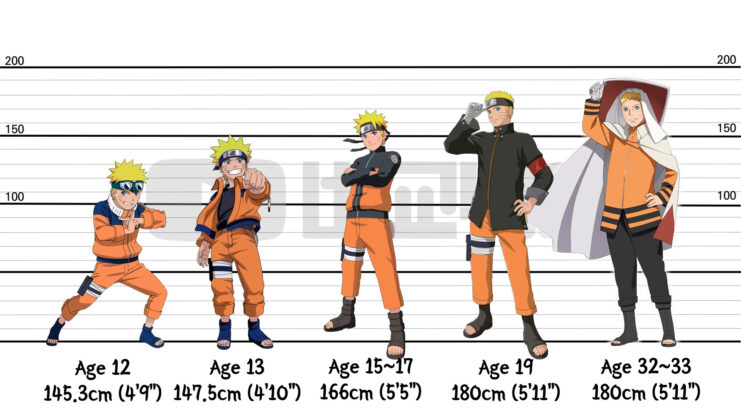
Throughout its extensive run, “Naruto” has been acknowledged for its well-developed characters and a multitude of story arcs that include pivotal battles that shape the ninja world.
Each character’s journey is marked by personal growth, evolving relationships, and significant battles that contribute to their development.
Main Characters and Allies
The protagonist of the series, Naruto Uzumaki, is a spirited ninja with an unyielding determination to become the Hokage, the village leader. Throughout the series, Naruto evolves significantly, both in skill and maturity.
His comrades, Sakura Haruno, and Sasuke Uchiha, also experienced substantial growth. Sakura, initially seen as someone in need of protection, becomes an adept medical ninja under the tutelage of Tsunade, one of the legendary Sannin.
Sasuke begins with a thirst for vengeance but undergoes complex development as he uncovers the truths of his clan’s downfall. Not to forget, Kakashi Hatake, the leader, and mentor of Team 7, is crucial for the growth and development of the main characters.
He provides guidance, training, and moral support throughout the arcs, especially in Naruto’s early development. Another ally of note is Rock Lee, a diligent ninja who, despite his inability to use typical ninja techniques, proves to be a formidable hand-to-hand combatant.
Significant Story Arcs and Fights
“Naruto” features a wide array of significant story arcs that delve into the lives of its characters and the larger political turmoil of the ninja world. The Land of Waves arc, for example, is important for showcasing early character dynamics and setting the tone for future challenges and complexities.
It marks Naruto’s first real mission and his encounters with deadly foes outside the safety of the academy. As the series progresses, viewers witness some of the most memorable fights that have left a lasting impact on anime fans.
The conflict between Naruto and Pain, the leader of Akatsuki, serves as a climax of character development for Naruto and a turning point in the series. It signifies the moment when Naruto steps up as a protector of his village, solidifying his position as a hero.
Moreover, the heart-wrenching battle between former friends Naruto and Sasuke explores themes of friendship, rivalry, and the painful cycle of hatred that the ninja world embodies.
These fights are not only significant for their choreography but also for their narrative importance, deeply affecting the plot and character trajectories. In short, “Naruto” blends in-depth character development with a succession of story arcs and major fights that are integral to the narrative, showcasing the growth of characters and the outcomes of their numerous clashes and encounters.
Exploring the Universe
The Naruto series delves deeply into the mystical and martial components that define its world, specifically focusing on the concept of Chakra and the role of Shinobi. Centrally, the Hidden Leaf Village (Konoha) figures as a focal point for the series’ most pivotal events.
Concept of Chakra and Shinobi
Within the Naruto universe, chakra is the essential energy source that shinobi (ninja) harnesses to perform various techniques known as jutsu. Each shinobi’s chakra is unique and can be molded to create an array of effects, such as the illusionary genjutsu or the transformative ninjutsu.
More advanced chakra control can lead to the development of powerful techniques, such as the Sharingan—a hereditary ability in the Uchiha clan that allows the user to predict movements, copy jutsu, and cast profound illusions.
Legendary figures like Jiraiya, who was a master at manipulating chakra, play a significant role in the tutelage of key characters, passing on critical knowledge and skills.
Importance of the Hidden Leaf Village
Konoha, or the Hidden Leaf Village, is the home of the series’ protagonist and many other central characters. As one of the Five Great Shinobi Countries, it is renowned for its strong leadership and powerful ninja, such as Gaara from the allied Hidden Sand Village, and infamous rogues like Orochimaru.
Konoha is not only a hub of shinobi activity but also a symbol of resilience and unity in the face of numerous threats. It is where aspirants learn about chakra, develop their skills, and undertake missions that range from mundane tasks to matters of survival and warfare.
Through this exploration, we see the intricate tapestry of chakra and its effects on the life of a shinobi, as well as the quintessential importance of Konoha as more than just a setting—it is a crucible where heroes are forged and legacies are continued.
Cultural Impact and Additional Media
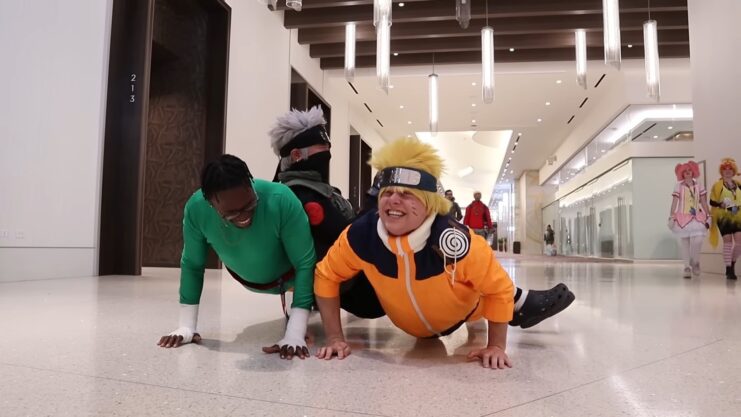
Naruto’s proliferation into popular culture underscores its influence beyond just airing on television. The impressive fact is that it is more popular among younger generations than some superhero movies like Black Panther or Hancock. It has ushered in a wave of interest in Japanese ninja culture and has seen its story expanded through various movies and media adaptations.
Presence in Popular Culture
Naruto has become synonymous with the globalization of Japanese anime and manga, embedding itself in the fabric of international pop culture. Its iconic characters and symbols, like the forehead protectors worn by ninjas, have been widely recognized and commercialized, leading to an undeniable impact on fashion and everyday language among fans.
The thematic elements of resilience and camaraderie resonate widely, creating a devoted fan base that spans across the globe.
Movies and Other Adaptations
Beyond the original series, Naruto’s narrative has extended to numerous movies that continue the adventures of Naruto and his comrades with additional storylines.
These films serve not only as supplementary content for devout fans but also as introductions to the franchise for newcomers. Here’s a brief overview:
- Naruto (Original Series): 220 episodes
- Naruto Shippuden: 500 episodes
- Boruto: Naruto Next Generations: Ongoing
| Title | Release Year | Note |
| Naruto the Movie: Ninja Clash in the Land of Snow | 2004 | The first cinematic release related to the series |
| Naruto Shippuden the Movie | 2007 | Continues the saga in film format |
| Boruto: Naruto the Movie | 2015 | Follows the next generation of ninjas |
In addition to the films, Naruto has also inspired novels, video games, and an abundance of merchandise, truly reflecting its standing as a cornerstone in anime and manga pop culture influence.
Merchandising and Media Distribution
The Naruto series has seen extensive merchandising and distribution in various media formats worldwide, making it accessible across different regions and platforms.
Home Media Formats and Releases
The Naruto anime series has been compiled into DVD and Blu-ray formats for fans to collect. These releases often come in both standard episodes and box sets that showcase significant arcs or the entire series.
For instance, audiences can own the adventures of Naruto Uzumaki and his quest to become the Hokage in comprehensive collections. Notably, the home media release strategy often includes special features and bonus content, making these sets appealing to collectors.
International Availability
In terms of international availability, the Naruto series has been distributed across various regions, including but not limited to Australia, New Zealand, and the United Kingdom. This wide distribution is indicative of the show’s global appeal and cultural impact.
Furthermore, platforms such as the iTunes Store have made episodes available for digital purchase, offering fans a convenient option to watch the series. The availability of Naruto in different regions adheres to DVD region coding, with most releases being suitable for their designated market’s region code.
Online Presence and Fandom

The Naruto series has a significant online presence, supported by a robust viewership on streaming platforms and active fan communities. These aspects have contributed to the series’ enduring popularity and cultural impact.
Streaming Services Availability
Naruto’s impressive catalog of episodes is available on a variety of streaming platforms, which has played a crucial role in sustaining the anime’s popularity.
Notably, Crunchyroll hosts the entire series, allowing fans to watch from the original episodes to the latest in the Naruto: Shippuden series. Likewise, Neon Alley, a section of VIZ Media, has historically offered anime for streaming, though its service has evolved. The show also had periods of availability on Adult Swim, specifically through its Toonami block, introducing it to a broader audience.
Fan Communities and Engagement
Naruto’s fandom is particularly active, with various communities dedicated to discussing, sharing, and creating content around the series. Fandom, formerly known as Wikia, hosts Narutopedia, a comprehensive encyclopedia on all things Naruto, created and maintained by fans. It provides detailed information about episodes like “Presence,” reinforcing the community’s dedication to the series.
Moreover, engagement within these communities extends to social media platforms, fan art, fan fiction, and conventions, underscoring the series’ ability to spawn a diverse and vibrant fan culture.
Critical Reception and Legacy
“The Naruto series, including ‘Naruto’ and ‘Naruto: Shippuden’, has received substantial acclaim and secured a powerful legacy in the anime and manga industry. Its influence is widely acknowledged in modern anime.”
Acclaim and Achievements
“Naruto” quickly rose to prominence upon its debut, garnering numerous awards for its storytelling and animation quality. The manga was a cornerstone in Weekly Shonen Jump, a leading manga publication, and the transition to anime only broadened its appeal.
“Naruto: Shippuden”, the sequel to the original series, continued this trend and received high ratings from fans and critics alike. Its meticulous character development and intricate plot solidified its place in anime history.
Influence on Modern Anime
The legacy of “Naruto” pervades the anime sphere, with its creative fight choreography and deep emotional storytelling becoming a benchmark for subsequent series.
Elements such as the importance of ninja clans, distinctive jutsu abilities, and the concept of the persistent underdog hero have influenced a myriad of modern shonen titles. “Naruto: Shippuden” further expanded the series’ impact by exploring mature themes, setting a precedent for character progression and long-form story arcs in anime.
Supplementary Information
In the expansive journey through the Naruto series, viewers encounter a mix of canonical storytelling and additional content that enhances the overall narrative. The inclusion of fillers and a structured bibliography serve as essential elements to the series’ progression and fan engagement.
Filler Content and its Role
Filler episodes in Naruto represent a significant portion of the anime, created to prevent the series from overtaking the manga upon which it is based. These episodes provide the manga author with time to develop further ahead of the anime adaptation.
While filler content is not a part of the original manga storyline, it offers viewers character development, background lore, and new adventures. For reference, the original Naruto anime series includes a total of 220 episodes, with a notable amount of these being filler. Additionally, Naruto Shippuden consists of 500 episodes, also containing filler arcs that extend the series’ runtime.
Guides and Bibliography
Guides and bibliographies afford fans a systematic approach to the anime, distinguishing between canonical episodes and filler content. They act as navigational tools for viewers who may choose to watch only plot-pertinent episodes or appreciate the entire series in its broadcast entirety.
Examples include online episode guides that mark filler content and provide contextual notes for the viewer’s discretion. References to the manga source material demonstrate the adaptation’s fidelity to the original story and where the anime has introduced unique narratives.
These resources are found on platforms like Wikipedia and fan-curated databases, which often include detailed episode information and bibliography sections for all Naruto-related media.
Exploration of Related Series
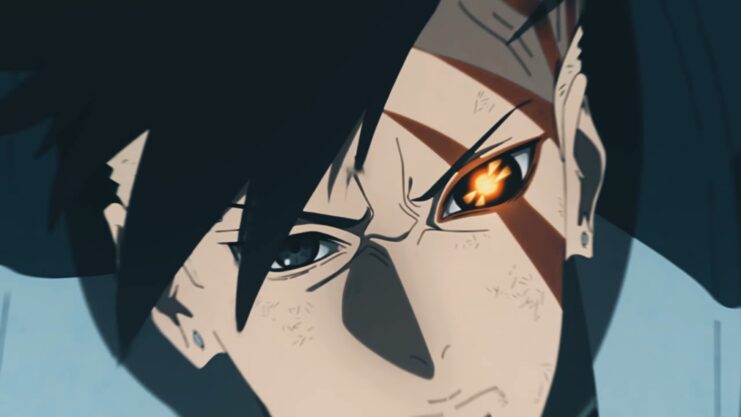
Following the conclusion of the Naruto series, the narrative continues through other series and spin-offs, focusing on the next generation of ninjas and offering fresh perspectives on the ninja world.
Boruto: The Next Generations
Boruto: Naruto Next Generations follows the adventures of Naruto Uzumaki’s son, Boruto, as he navigates his path as a ninja. The ongoing show begins with Boruto entering the Ninja Academy and ultimately joining a team similar to his father’s.
It presents new challenges and characters, while also exploring the changing dynamics between the original characters, now as adults and parents.
Other Spin-offs and Inspirations
Within the extensive Naruto franchise, there are additional works that expand the universe. Notably, Kakashi Gaiden is a short arc that delves into the backstory of Kakashi Hatake, one of Naruto’s mentors.
This narrative piece is crucial in understanding Kakashi’s complex character and history, providing insights into his past, his actions as the Sixth Hokage, and the cyclical nature of the challenges faced by the characters.
Konohamaru, another significant character in both Naruto and Boruto, is portrayed as a young ninja who idolizes Naruto and is determined to follow in his footsteps.
His journey is sprinkled throughout the series, showcasing his growth and aspirations to be recognized as a formidable ninja in his own right. In contrast to the main narratives, various spin-offs, and adaptations, including light novels and OVAs, further enrich the Naruto universe, unfolding side stories and character developments that complement the primary series.
These works maintain the spirit of the original while advancing the overarching theme of growth and the pursuit of one’s destiny.
Viewer Guidance and Content Notes
When exploring the Naruto series, viewers should be aware of the differences between uncut and edited versions, as well as consider the age appropriateness of the content. These factors may influence viewing choices depending on personal preferences or suitability for different age groups.
Uncut Versus Edited Versions
The Naruto anime has been available in both uncut and edited formats. The uncut format retains all of the original content, including scenes that may contain more intense violence or cultural nuances.
In contrast, edited versions aim to make the series more suitable for a broader audience by removing or altering scenes that might be deemed inappropriate for certain viewers.
For example, when Naruto was aired on Disney XD, some edits were made to make the content suitable for the channel’s target demographic. Audiences seeking the full narrative without modifications are advised to view the uncut episodes.
Age Appropriateness and Ratings
Naruto, as a television series, is generally designed for a younger audience, typically teenagers and above. However, given the nature of some scenes that include martial arts combat and fantasy violence, it’s been rated PG-13.
Parents are encouraged to review the content before allowing younger children to watch and may prefer the edited versions that are often less intense. The series covers themes of friendship, perseverance, and growth, which can resonate positively with viewers, but it’s important to align these with viewers’ maturity levels.
Behind-the-Scenes Insights
In the creation of the Naruto anime series, a dedicated production crew worked meticulously alongside talented directors to bring Masashi Kishimoto’s vision to life. Innovative animation techniques and character design were paramount in distinguishing the show from the crowded anime landscape.
Production Crew and Directors
Studio Pierrot, renowned for its role in producing notable anime series, was the animation studio behind Naruto. The production of the series was steered by Hayato Date, who served as the chief director.
His oversight ensured that Kishimoto’s original manga was adapted with close attention to storytelling and character progression. The production team navigated challenges such as maintaining consistency throughout the long-running series and the adaptation of manga material that was being published concurrently with the anime’s production.
Animation Techniques and Design
The animation style of Naruto is a direct reflection of Masashi Kishimoto’s distinct art in the manga. The show employed traditional 2D animation while incorporating computer-generated imagery (CGI) for complex scenes, particularly during fight sequences.
This blend of techniques resulted in fluid and dynamic action scenes, a signature element of the series. Character design remained faithful to the source material, all the while allowing the animation team the creative freedom to express the intense emotions and unique abilities of each ninja in the world of Naruto.
Narrative Elements and Themes
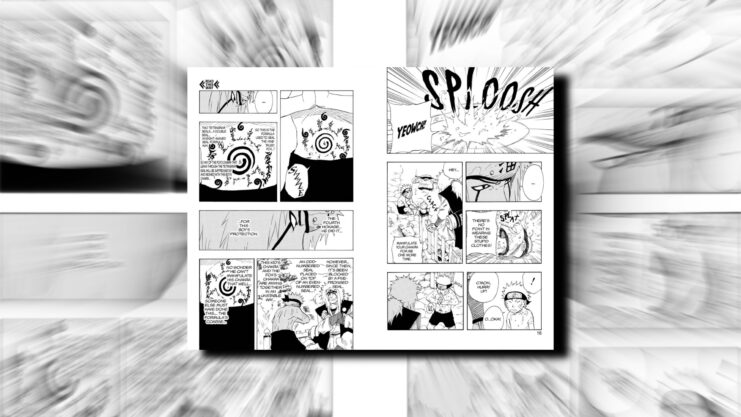
In “Naruto,” the plot intricacies and thematic content are defined by the hero’s quest for acknowledgment and the critical examination of moral dualities. Character development and motivations are explored deeply throughout the series, underpinning the show’s rich narrative.
Hero’s Journey and Character Motivation
The narrative of “Naruto” follows Naruto Uzumaki’s evolution, encapsulating the Hero’s Journey from a brash, unrecognized youngster to a respected ninja. Naruto is driven by a strong desire to be acknowledged by his peers and to become the Hokage, the leader and strongest ninja of his village.
This central motivation is shaped by his initial lack of strength and the loneliness he experiences due to the fear villagers have of the Nine-Tails fox sealed within him.
On this path, he meets Sasuke, another pivotal character, whose motivations are powered by a quest for power to avenge his clan, drawing a complex interplay between their contrasting definitions of strength.
Depiction of Good Versus Evil
“Naruto” presents the conflict of good versus evil in shades of grey rather than black and white. It delves into the psyche of the villains, providing backstories that often garner sympathy from the audience.
For example, Naruto Uzumaki’s steadfast belief in his reality and his conviction in the goodness of people contrast against various antagonists who embody different aspects of evil or misguided intentions.
The relentless pursuit of personal goals creates a reality where both heroes and villains are tested, and where the true meaning of strength is often associated with perseverance and integrity rather than just physical power.
Through these narrative elements and themes, “Naruto” explores philosophical questions and the essence of human nature, while keeping the focus on the core tenet: the growth and journey of its hero and those around him.
Collectibles and Fan Merchandise
For dedicated fans of the Naruto series, the availability of collectibles, such as box sets and special editions, along with figurines and apparel, enriches the experience of the anime beyond its impressive episode count.
Availability of Box Sets and Special Editions
Naruto has been condensed into numerous box sets, which cater to fans who desire a tangible collection of the series. These sets often vary by region, so collectors must ensure compatibility with their local DVD or Blu-ray players.
Special editions sometimes include exclusive extras like artwork, bonus episodes, or creator interviews that provide additional insights into the world of Naruto.
Figurines and Apparel
The franchise’s extensive catalog of figurines offers everything from standard action figures to meticulously detailed collectibles. These figurines often depict favorite characters in iconic poses or during memorable scenes from the series.
Regarding apparel, fans have a variety of options, from casual T-shirts and beanie hats featuring Naruto’s Hidden Leaf symbol to more elaborate costume replicas suitable for cosplay.
Find a world of Naruto Series collectibles including box sets and browse Naruto-inspired apparel that brings the anime closer to its audience.
Fan Activities and Interactions
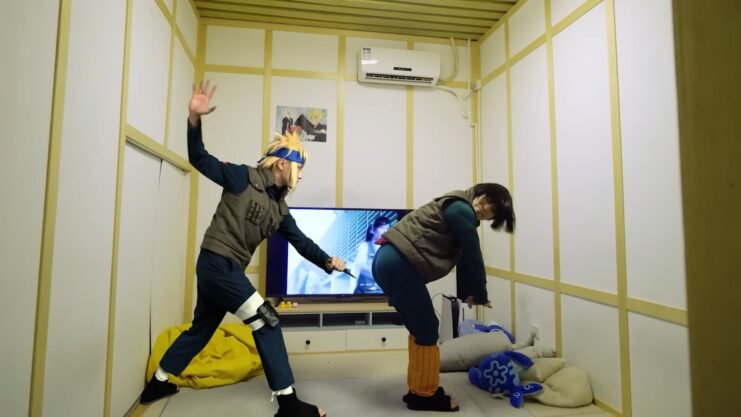
The Naruto series has fostered a vibrant fandom, characterized by various forms of engagement and celebration that go beyond simply watching the show. Enthusiasts of the franchise actively participate in both physical and digital spaces to share their passion and interact with fellow fans.
Conventions and Fan Meetups
Conventions serve as a pilgrimage for Naruto fans, offering an environment where they can express their devotion through cosplay, art, and merchandise collection.
Key events like Anime Expo and Comic-Con have dedicated panels for Naruto, where voice actors often participate in Q&A sessions. Additionally, local fan meetups provide a more intimate setting for fans to engage in discussions, exchange fan art, and participate in Naruto-themed activities.
Online Communities and Discussion
In the digital realm, Naruto’s fandom thrives in online communities across websites such as Reddit, Tumblr, and fan forums. Discussions can range from analyzing the latest filler list to in-depth character development studies.
These platforms facilitate fanfiction sharing, AMVs (Anime Music Videos) creation, and even fan theories and debates about various story arcs, enriching the viewing experience through community engagement.
Journey Beyond the Anime
The Naruto series extends its reach beyond its television format through a collection of novels and games, while also leaving a lasting impact on popular culture and media.
Expansion into Novels and Games
After the conclusion of “Naruto Shippuden”, which totals 500 episodes, the series continued to grow through various media. Novels such as “Naruto: Kakashi’s Story” and “Naruto: Shikamaru’s Story” delve deeper into the lives of beloved characters, enriching the world that fans have come to adore. They explore narratives that the anime only briefly touched upon, providing new insights and experiences.
The franchise also expanded into the gaming world with titles across multiple platforms, such as “Naruto: Ultimate Ninja Storm” and “Naruto Shippuden: Ultimate Ninja Blazing”. These games allow players to experience the Naruto universe interactively, often spanning events from the anime and sometimes introducing original content.
The Ongoing Influence of the Series
The influence of the Naruto series is undeniable, resonating with fans years after the original and “Naruto Shippuden” episodes aired. The series is frequently credited with influencing an entire generation’s interest in anime and manga, with many current manga artists citing Naruto’s creator, Masashi Kishimoto, as an inspiration.
Its themes of perseverance, friendship, and self-improvement echo in other works and continue to inspire merchandise, fan art, and discussions across internet forums and social media platforms.
Resources for New and Returning Fans
For those diving into the world of Naruto or revisiting the rich tapestry of its narrative, key resources are at their disposal to navigate the multiple story arcs, understand the dynamics between the protagonist, his allies, and villains, and where to access the content.
Where to Start?
For newcomers, starting with the original Naruto series is essential. This forms the foundation of the story, where viewers meet young Naruto and his comrades at the Ninja Academy.
The series is structured into several story arcs that introduce various allies, villains, and pivotal moments in Naruto’s journey to becoming a Hokage. Fans can stream all episodes of the original series on platforms like Crunchyroll and Hulu, offering a comprehensive view of Naruto’s early adventures.
Additional Recommendations
After completing the original series, the next recommendation is to watch Naruto: Shippuden. It continues Naruto’s story with a more mature perspective, deeper exploration of relationships, and higher stakes in confronting powerful adversaries.
Throughout Shippuden, the series takes deeper dives into complex characters and plot twists, steadily building up to an epic conclusion. Both new and returning fans should not miss the exciting developments taking place during these episodes, available on Neon Alley, amongst other platforms, which picks up from where the original series left off.
Preserving the Legacy
The cultural and commercial impact of Naruto extends beyond the realm of entertainment, reflecting a compelling blend of Japanese tradition and the universal appeal of a hero’s journey. This legacy is not only a focal point for fans but has also garnered significant academic interest and commercial evolution.
Cultural Preservation and Academic Interest
In Japan, Naruto has transcended its origins as a manga and anime series to become a cultural icon. Universities have recognized the series’ value in exploring themes of heroism, perseverance, and cultural identity, often incorporating Naruto into curriculum discussions that examine its influence on Japanese pop culture. Such academic focus not only underscores the series’ relevance but also preserves its philosophies and artistry for future generations.
Future of the Brand
The Naruto brand, encapsulating the journey of its titular hero, continues to thrive through various media, including sequels like Boruto and numerous video games.
The narrative of Naruto has carefully woven a legacy that resonates with new audiences, ensuring the brand’s longevity. Commercial endeavors leverage Naruto’s widespread recognition, with merchandise and collaborations with other brands serving as a testament to its enduring popularity.
Frequently Asked Questions
What inspired Masashi Kishimoto to create Naruto?
A1: Kishimoto was inspired by Japanese folklore and ninja culture, as well as previous shonen comics, to create a series that explores the hardships of a ninja’s life with a rich Japanese cultural backdrop.
How does Naruto’s character evolve throughout the series?
Naruto evolves from an ostracized orphan to a respected ninja, embodying determination and the will to never give up, ultimately aspiring to become the Hokage of his village.
What role does Studio Pierrot play in the Naruto anime?
Studio Pierrot is responsible for the animation of the Naruto series, bringing the characters and the world of the Hidden Leaf Village to life with attention to detail, especially in dynamic ninja battles.
How does “Naruto: Shippuden” differ from the original series?
“Naruto: Shippuden” picks up with Naruto returning after two and a half years of training, focusing on more mature themes, Naruto’s quest to bring back Sasuke, and battles against the Akatsuki organization.
What is the significance of chakra in the Naruto universe?
Chakra is the essential energy source that ninjas use to perform various techniques. It’s unique to each shinobi and can be molded for different effects, such as genjutsu or ninjutsu.
How has Naruto influenced modern anime and popular culture?
A6: Naruto has set a benchmark in anime with its creative fight choreography and deep storytelling. It’s influenced the globalization of Japanese anime and manga, impacting fashion, and everyday language, and inspiring a wave of interest in Japanese ninja culture.
Summary
“Naruto” significantly influenced pop culture, leading to movies, novels, video games, and merchandise. It fostered a dedicated fan community and expanded with “Boruto: Naruto Next Generations,” continuing its legacy through Naruto’s son and other spin-offs.
Available in both edited and uncut formats, it’s accessible to a broad audience and acclaimed for its storytelling, animation, and impact on anime, setting standards for character development and story arcs.

